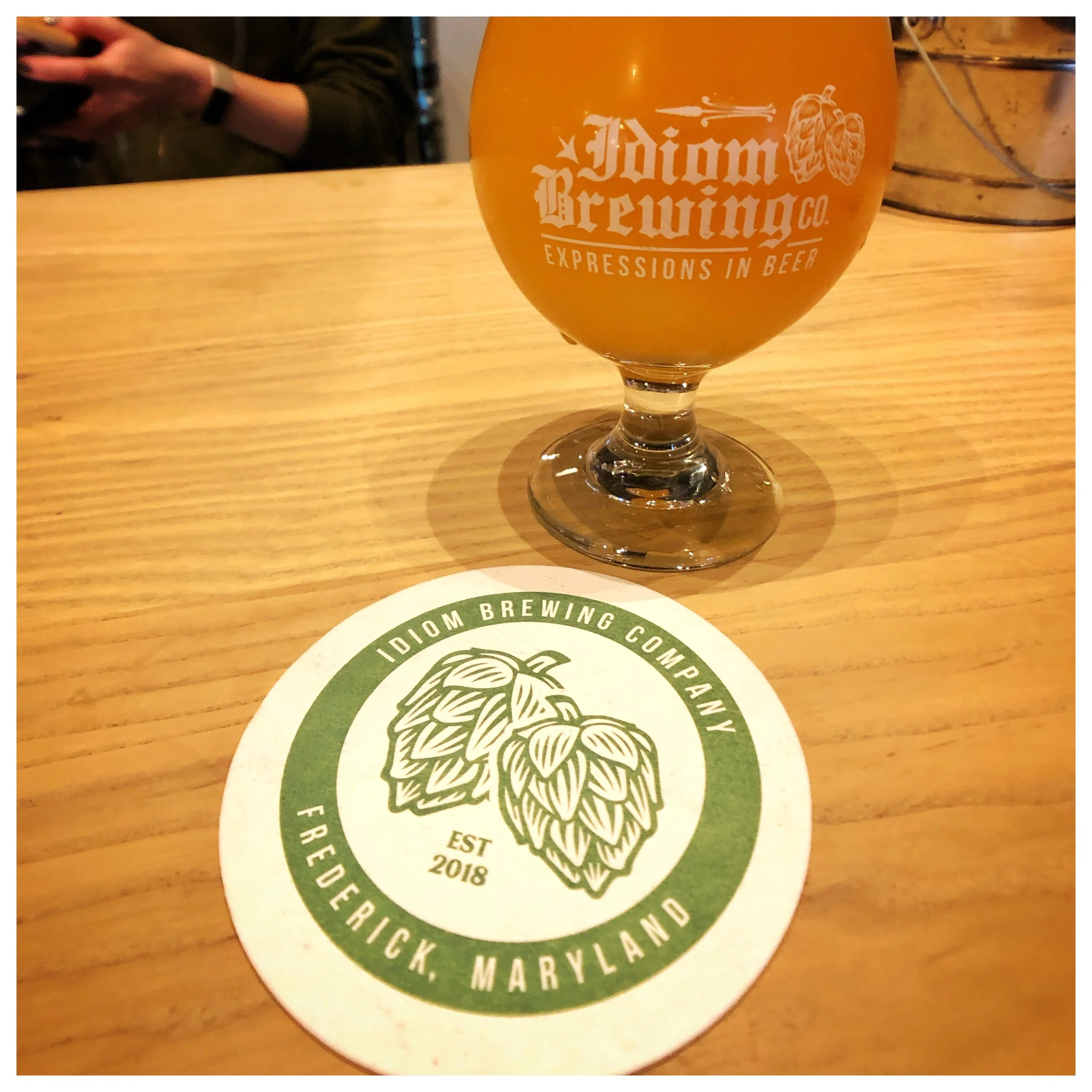THE SESSION #117— BEER BLOGGING FRIDAY The Session, a.k.a. Beer Blogging Friday, is an opportunity once a month for beer bloggers from around the world to get together and write from their own unique perspective on a single topic. Each month, a different beer blogger hosts the Session, chooses a topic and creates a round-up listing all of the participants, along with a short pithy critique of each entry.
The November 2016, edition The Session No. 117 was hosted by Csaba Babak at Beer Means Business. The theme directions were simple and wide open, consider the future of beer and “capture ONE thing you think we will see MORE of with an explanation of the idea.”
Less Room in the Inn
This is an interesting question — more what — and the answer, as desired, can go in any direction. The one thing that has been on my mind is the pending beer bubble burst. There have been many pundits that tell us there is plenty of room in the beer business, that there is no looming bubble. But there are some very basic things we must be on our minds.
I've been working with a very nice bottle shop — The Winery — for almost nine years. During that time, a lot has changed in the beer business and culture. More breweries, better beer, more sophisticated beer drinkers. And with all of that, more beer trying to push its way onto pub tap handles and bottle shop shelves. And what about those tap handles and beer shelves. My observation is that they haven't expanded all that much to accept the deluge of beer coming on the market each week. The creation of new beers is one thing, expanded distribution adds a whole other dimension. Just in the last year some excellent, long standing breweries have begun distribution to my state of Maryland, including Bell’s, Founders, SweetWater.
So what does that do to the beer from Stone, Lagunitas and Dogfish Head. Rather than go with the great beer we’ve come to know from these breweries, many curious beer drinkers want to try the beer they may only have heard about.
I attended the Backyard Symposium event at Flying Dog in Frederick MD leading up to Savor in Washington DC this year — an event they hold this time of year. Ryan Glenn, Ballast Point VP of Operations was asked about the Grapefruit Sculpin and how that came into being. He said that they must produce their regular lineup of expected beers, for example Sculpin, but that there is a segment of the customer base that wants to try the new thing and that they have to be there with those beers e.g. Grapefruit Sculpin. In other words, they have to keep pushing more beer onto the market to stay relevant.
Local Preferences
As an observation of people making beer choices, I've noticed a preference for beer from local breweries. Some have even voiced their opinions of this preference. Some of this is an effort to support locals businesses. Some may be from an effort of limiting decision exhaustion — too many choices causes people to decide with with what they know.
Good Beer Hunting in a July 2016 article mentioned that, “In a 2015 survey by market research firm Nielsen, 45% of respondents said “local” is important to their beer purchasing decisions. The number rose to 53% for 21-34-year-olds, the most important potential consumer demographic in American beer.”
Again, this makes pulling the Stone beers from the shelf to make your next beer that much less likely. Speaking of Stone...
Stone Layoffs
The recent announcement from Stone Brewing says a lot about the current state of the brewing industry. The mature breweries are feeling the pinch from macro beer, but also from the new comer local breweries.
“Due to an unforeseen slowdown in our consistent growth and changes in the craft beer landscape, we have had to make the difficult decision to restructure our staff. Unfortunately, this comes despite a year that includes the incredible accomplishments of opening two new breweries, which are ultimately expanding the availability of Stone beers and boosting the reputation of American craft beer in Europe.
“More recently however, the larger independent craft segment has developed tremendous pressures. Specifically, the onset of greater pressures from Big Beer as a result of their acquisition strategies, and the further proliferation of small, hyper-local breweries has slowed growth. With business and the market now less predictable, we must restructure to preserve a healthy future for our company. Even given this unfortunate circumstance, we will continue to be fiercely independent and, importantly, Stone remains one of the largest – if not the largest – employers in the craft brewing segment.
Less Jovial Brethren
The word has been that the craft beer business is a friendly sort, that craft breweries all get along great and help each other, brewing beers through collaborations, sharing excess hops with needy smaller breweries. And I'm sure that is mostly true. But there is increasing news about law suits over marketing infringements and the such. Its getting crowded in here, give me some room. Industrial macro beer is the common enemy of craft beer, right?
But business is business when survival is on the line. I've been reading Sam Calagione’s new book Off-Centered Leadership. It's a great read about the throws of building a business from scratch and directing it through the maze of growth and higher expectations.
One particular passage caught my attention on the subject of increased competition within the craft beer business.
“I saw our industry becoming more complicated and competitive is less of jovial, familial club on like-minded entrepreneurs”
“I began considering bringing in new external resource in 2014 I saw our industry becoming more complicated and competitive is less of jovial, familial clubon like-minded entrepreneurs. Don’t get me wrong, most of the 4,000 indie craft breweries in the country still recognized each other as compatriots. But the landscape where the large breweries operate this change more rapidly in the last two years. Having the previous 18 years our company has been in business. More and more breweries that were once and for my craft brewer founders are now controlled by publicly traded international brewing conglomerates or financial enterprises— yet compete with craft brewers because they have acquired craft breweries. To ensure we remain competitive and continue to reach a bigger market, we needed to invest in the business. Before we could consider bringing in outside investors, who have their own opinions about what dogfish should be focused on, however, I wanted to make sure our internal leadership team is ready to work with the greater harmony priorities.”
Too Many Beers Out There
In a Thrillist article Why Craft Brewing Is About To Go To War With Itself again the finger gets pointed to the new competition is from inside the craft beer industry.
Craft beer’s competition isn’t the Anheuser-Busch boogeyman anymore. “We’re definitely not getting pushed around by the macros [like we were] when Sierra Nevada and Bell’s were coming around,” says John Laffler, co-founder and brewmaster at Chicago’s Off Color and the former “innovation brewer” at Goose Island. Nope, these days, it’s the brewer next door that poses the threat. Across the country, craft brewers are crowding in. The neighborly smiles are starting to strain.
Serious Eats stated in a 2014 article stating that the breweries are simply out pacing the expanded beer drinking base. That was 2014, how about now in 2016 when there are a record number of breweries in the US.
““We all talk about the camaraderie in the industry, but at some point competition is a very real issue: the number of breweries outpacing the growth of the consumer base, outpacing the growth of available tap handle space, available grocery store space,” says Tom Nickel, co-founder of Nickel Beer Company in Julian, California and co-owner of O’Brien’s Pub and West Coast Barbecue & Brew.”
CONCLUSION
As craft beer drinkers we have a lot to be thankful for. The selection of beer has never been better. Not only has the quality gotten better, the range of style and hybrids has certainly kept it interesting. But the physical reality is that there is only so much space on bottle shop shelves and only so many tap handles to compete for. When the pressure increases, business survival becomes even more front and center. It’s a big room, right? Perhaps from a beer drinkers perspective, but not as big as it use to be for craft brewers.


